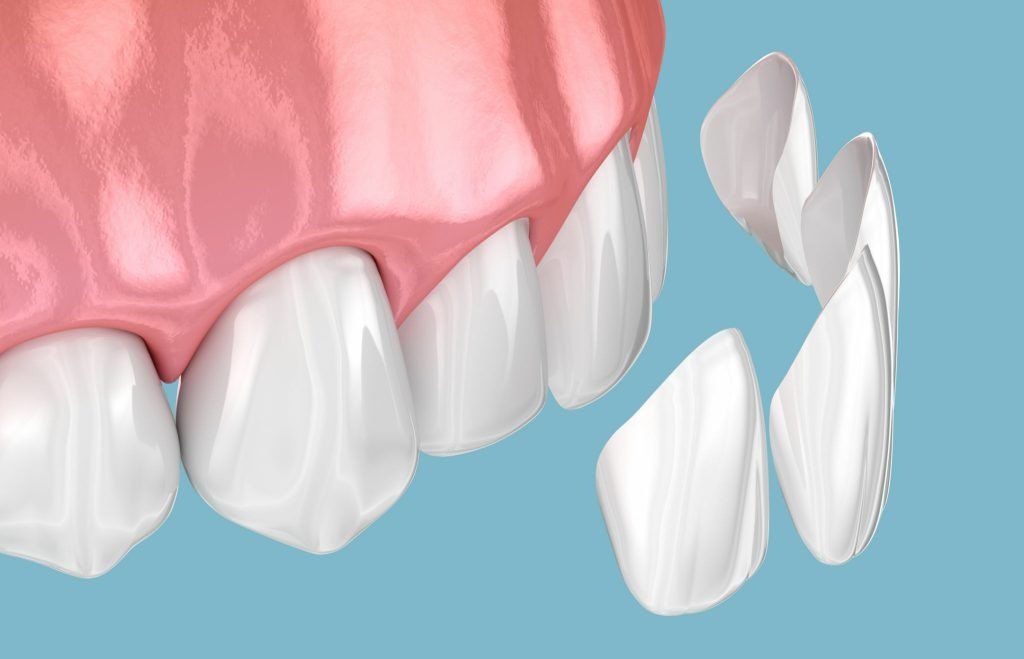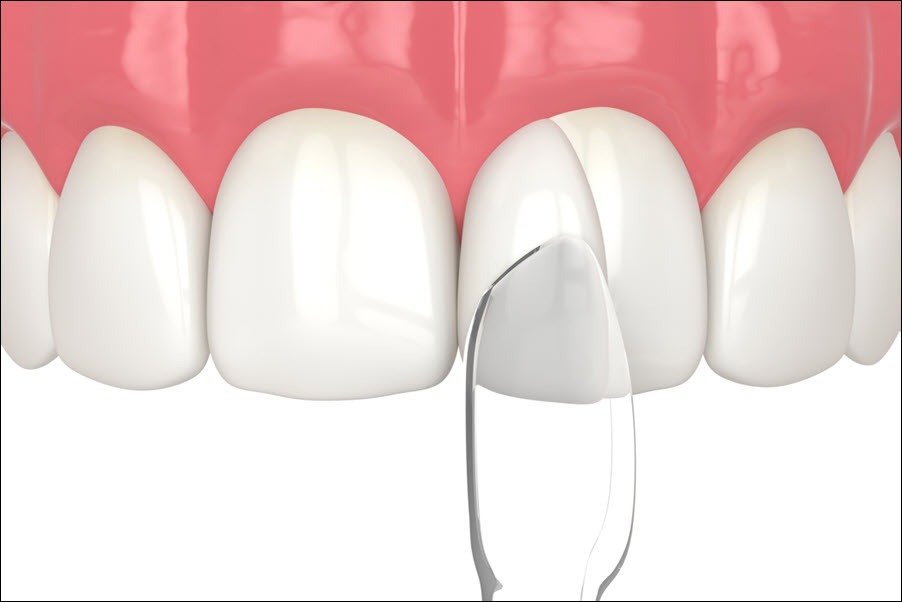Blog
Stay informed with the latest in dental health, treatment advancements, and expert tips from Al Safwa Medical Center in Abu Dhabi. Our blog is your go-to resource for maintaining a healthy, radiant smile.

Composite Bonding: The Fastest Way to Fix your Teeth
Minor imperfections can make an otherwise healthy smile look aged or unbalanced. A small chip, a gap between front teeth, or surface discoloration can affect confidence just as much as a major dental issue. At Al Safwa Medical Center – Abu Dhabi, composite bonding has become one of the most requested aesthetic dental procedures for patients seeking an efficient and minimally invasive solution.
This article explains what composite bonding is, how it works, and why our dentists often recommend it as an alternative to veneers or crowns when only minor corrections are required.
What is composite bonding?

Composite bonding (also called tooth bonding or cosmetic bonding) is a procedure that uses a tooth-colored composite resin to restore or enhance the appearance of a tooth. The material, which contains fine glass particles suspended in a resin matrix, is sculpted directly on the tooth and hardened using a blue-light polymerization system.
Clinically, composite bonding serves both restorative and esthetic purposes:
- To repair chipped or fractured enamel
- To close minor diastemas (gaps)
- To reshape irregular teeth
- To cover intrinsic stains or enamel defects
- To improve proportional balance in the smile line
At Al Safwa Medical Center, dentists select the resin’s shade, translucency, and surface gloss to match each patient’s natural dentition, ensuring that the restoration blends seamlessly.
How does composite bonding differ from veneers or crowns?
Patients often compare bonding with porcelain veneers and dental crowns, since all three enhance the smile’s appearance. The primary distinctions lie in invasiveness, durability, and indication:
| Feature | Composite Bonding | Porcelain Veneers | Dental Crowns |
| Tooth Preparation | Minimal (0–0.3 mm) | Moderate (0.5–1 mm) | Significant (≥1.5 mm) |
| Number of Visits | Usually 1 | 2–3 | 2–3 |
| Reversibility | Yes | No | No |
| Typical Lifespan | 4–8 years | 10–15 years | 10–20 years |
| Repair Ease | Simple chairside | Requires lab | Requires lab |
How to prepare for your dental bonding appointment
Preparation for bonding at Al Safwa Medical Center is straightforward. The treating dentist performs a comprehensive examination using intra-oral cameras and digital shade guides to document the tooth’s color, surface texture, and bite alignment. In most cases, no anesthesia is required unless the bonding follows a restorative procedure such as filling replacement or minor enamel recontouring.
Typical pre-treatment steps include:
- Professional scaling and polishing to remove plaque film and surface stains.
- Color matching using a digital shade scanner or manual shade tabs (e.g., Vita Classical).
- Surface etching with 35–37 % phosphoric acid for 15 seconds to increase micro-mechanical retention.
- Bonding agent application: a light-cured adhesive that integrates the resin with the tooth structure.
After these steps, the dentist proceeds to the sculpting phase.
Step-by-step breakdown of the bonding procedure

- Isolation and moisture control
The tooth is isolated using cotton rolls or a rubber dam to ensure a dry field. Moisture contamination can affect adhesion strength. - Etching and priming
The enamel is etched with acid gel, rinsed, and gently dried. A primer is then applied to promote micromechanical bonding. - Adhesive layer
A thin layer of bonding agent (often a fifth- or seventh-generation adhesive) is light-cured for 20 seconds. - Incremental layering
The dentist applies the composite resin in 1–2 mm increments, each sculpted with fine brushes and cured individually. This minimizes polymerization shrinkage and ensures internal strength. - Sculpting and contouring
Using digital reference images or mock-ups, the dentist shapes the tooth to achieve natural morphology. - Polishing and finishing
The restoration is polished with multi-step abrasive discs, rubber cups, and diamond paste to reproduce enamel luster.
Entire treatment time: approximately 30–60 minutes per tooth, depending on complexity.
Who is an ideal candidate for composite bonding?
Bonding is suitable for patients who:
- Have minor chips, fractures, or irregular edges
- Desire gap closure without orthodontic treatment
- Need quick cosmetic improvement before an event
- Present mild discoloration not responsive to whitening
- Prefer a reversible procedure before committing to veneers
However, it is not ideal for individuals with severe bruxism, large structural loss, or extensive caries. In those cases, a ceramic restoration or crown is more appropriate.
Can composite bonding fix uneven front teeth?
Yes. Composite bonding can reshape and align minor discrepancies in front teeth by adding controlled resin layers to one or more teeth. The dentist may perform enamel recontouring on opposing surfaces to balance the incisal edges and maintain occlusal harmony.
This micro-esthetic correction often eliminates the need for orthodontic movement in cases where unevenness is purely morphological rather than skeletal.
How long does tooth bonding last and how to maintain it?
Properly maintained composite bonding lasts between 4 and 8 years, depending on patient habits, diet, and oral hygiene. Routine maintenance ensures color stability and prevents marginal staining.
Recommended aftercare:
- Brush twice daily with non-abrasive toothpaste (RDA < 70).
- Avoid biting hard objects such as ice or fingernails.
- Schedule polishing visits every 6 months at Al Safwa Medical Center.
- Use custom night guards if mild bruxism is detected.
Composite bonding can be easily re-polished or repaired without replacing the entire restoration.
Are there risks or side effects to dental bonding?
Composite bonding is generally safe. However, like any adhesive restoration, it may present minor risks:
- Marginal staining from coffee, tea, or tobacco
- Micro chipping if subjected to high occlusal stress
- Color shift over several years due to resin oxidation
Our clinicians mitigate these issues through layering techniques, finishing protocols, and occlusal adjustments during follow-ups.
Is composite bonding painful?
No. Composite bonding is minimally invasive and often pain-free. Most procedures require no anesthesia. When the bonding follows cavity removal or enamel recontouring, a small amount of local anesthetic may be used for comfort. Patients generally resume eating and speaking immediately after treatment.
How to decide between bonding, veneers, or orthodontics?
The choice depends on the clinical goal and extent of irregularity.
- Composite bonding: ideal for minor cosmetic issues, quick results, and low cost.
- Porcelain veneers: preferred for moderate color correction, shape enhancement, or when long-term stability is desired.
- Orthodontics (e.g., Invisalign): necessary when alignment problems involve root or skeletal positions rather than surface irregularities.
At Al Safwa Medical Center, dentists may combine procedures for example, orthodontic alignment followed by fine contouring with composite to achieve the most conservative outcome.
What happens if the bonding gets damaged?
If chipping occurs, repair is straightforward. The dentist roughens the affected area, applies fresh adhesive, and adds new composite. Unlike ceramic veneers that require full replacement when fractured, bonded restorations can be locally repaired in minutes.
This adaptability makes composite bonding especially beneficial for young patients or those prone to minor accidents.
Does bonding affect tooth enamel?
Composite bonding preserves almost the entire enamel structure. Etching creates microscopic pores (0.5–2 µm deep) that provide retention without altering tooth integrity. If the restoration is removed, the enamel can be polished back to its natural state, leaving it virtually unchanged.
This conservative approach aligns with the principles of minimally invasive dentistry endorsed by the European Society of Cosmetic Dentistry (ESCD).
How does composite bonding integrate with other dental treatments?
Bonding can complement various procedures performed at Al Safwa Medical Center:
- Post-orthodontic refinement: smoothing or reshaping after Invisalign therapy.
- Gum contouring and bonding combo: harmonizing gum line and incisal edges for a balanced smile.
- Teeth whitening follow-up: performing bonding two weeks after bleaching ensures accurate color matching.
- Implant restoration: adjusting adjacent tooth shapes for symmetrical emergence profiles.
Key advantages of choosing Al Safwa Medical Center for bonding

- Expertise across specialties – procedures are supervised by experienced clinicians such as Dr. Mohammed Dalloul and Dr. Rahul Patel, ensuring functional and esthetic precision.
- Advanced equipment – intra-oral scanners and digital mock-ups allow patients to preview results before resin application.
- Holistic approach – integration with orthodontics, gum care, and implants for long-term stability.
- Patient comfort – modern operatories and evening hours (10 AM – 10 PM) make care accessible.
- High patient satisfaction – 4.9/5 rating based on verified reviews for gentle, pain-free treatments.
Composite bonding offers a reliable, conservative, and fast way to enhance your smile without drilling or major procedures. For patients in Bani Yas and Abu Dhabi looking to correct chips, gaps, or uneven teeth, this technique provides natural results in just one visit.
To learn more about composite bonding and other aesthetic treatments, visit the official website of Al Safwa Medical Center or book a clinical consultation with our dental team.
0 Comments